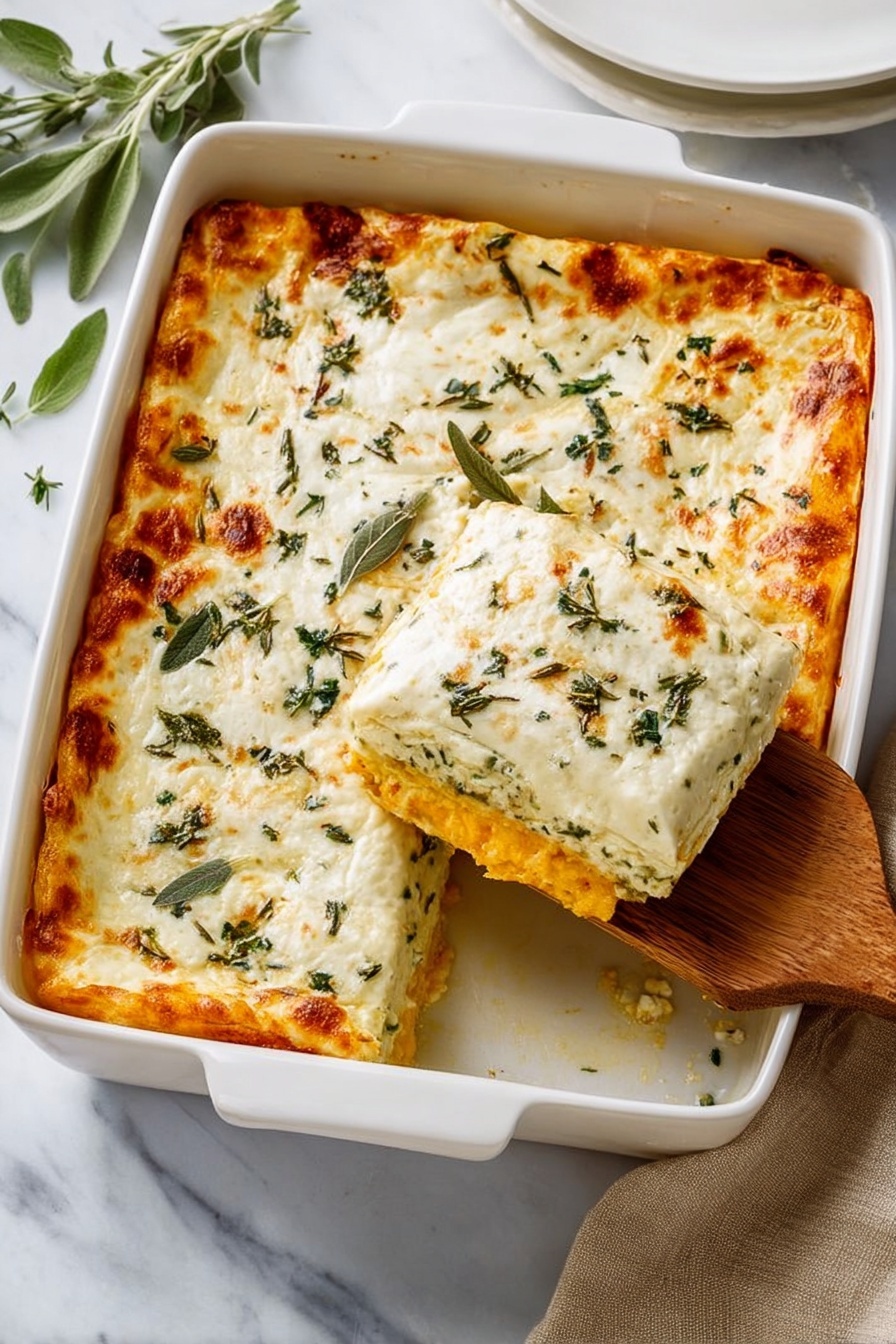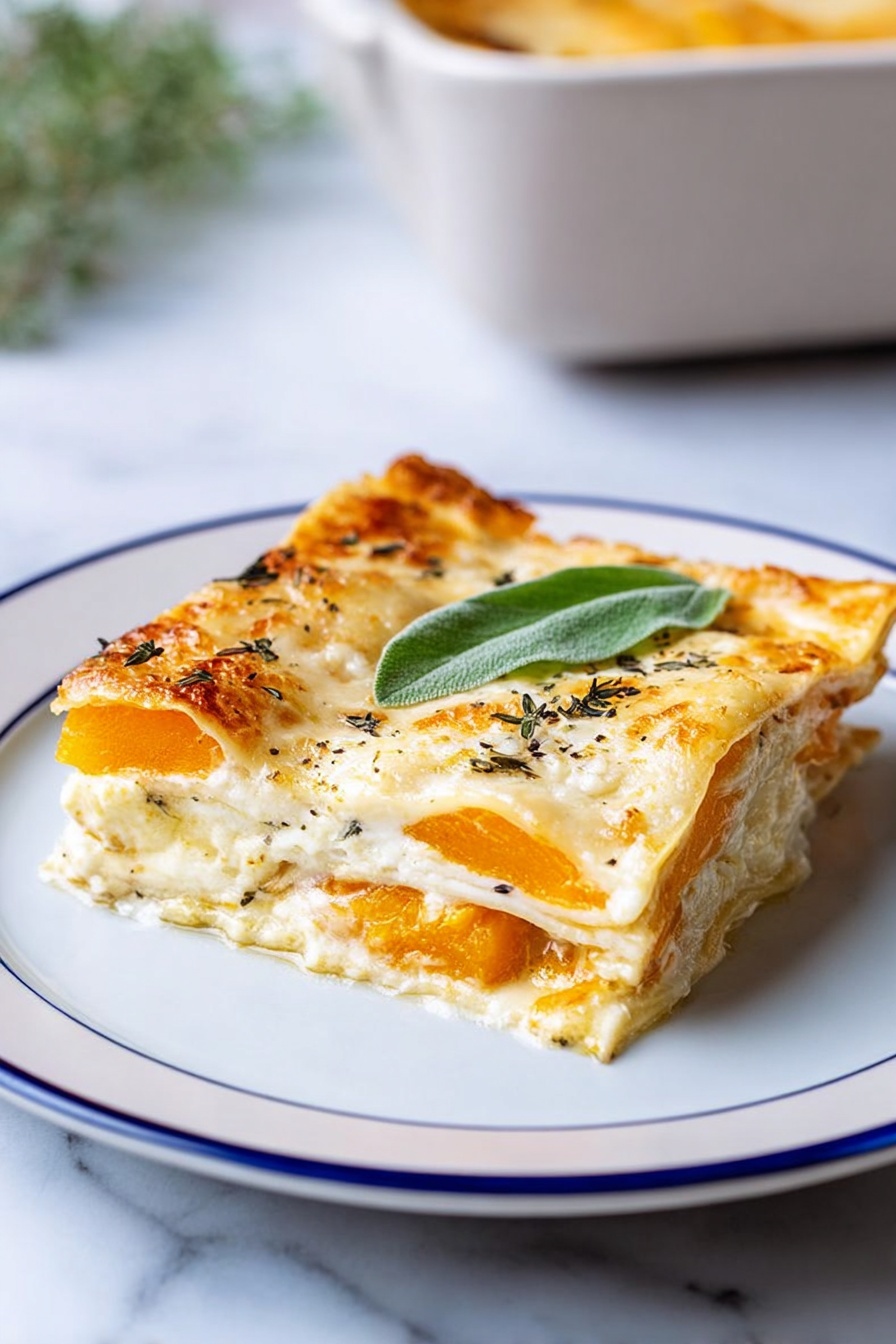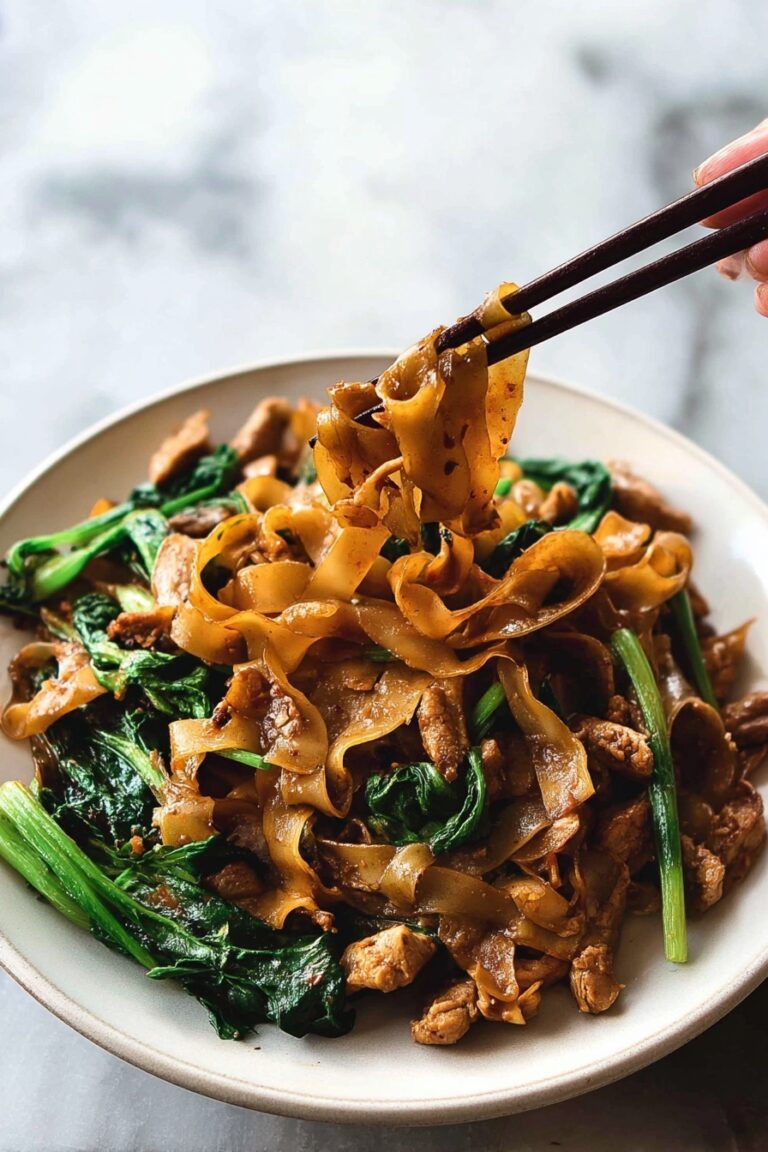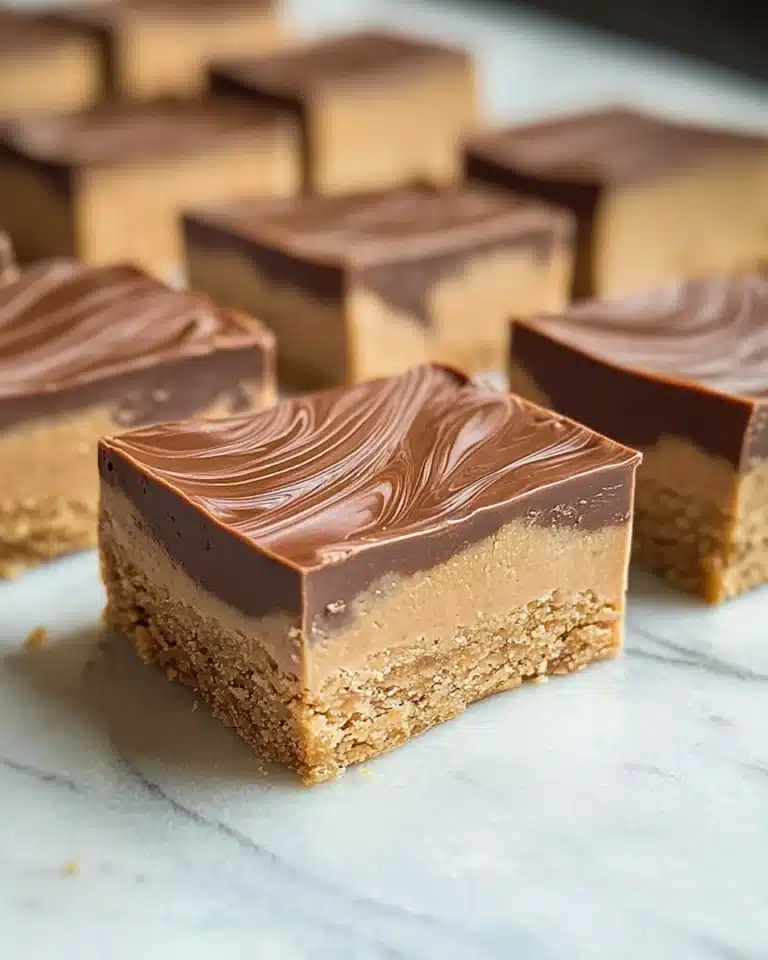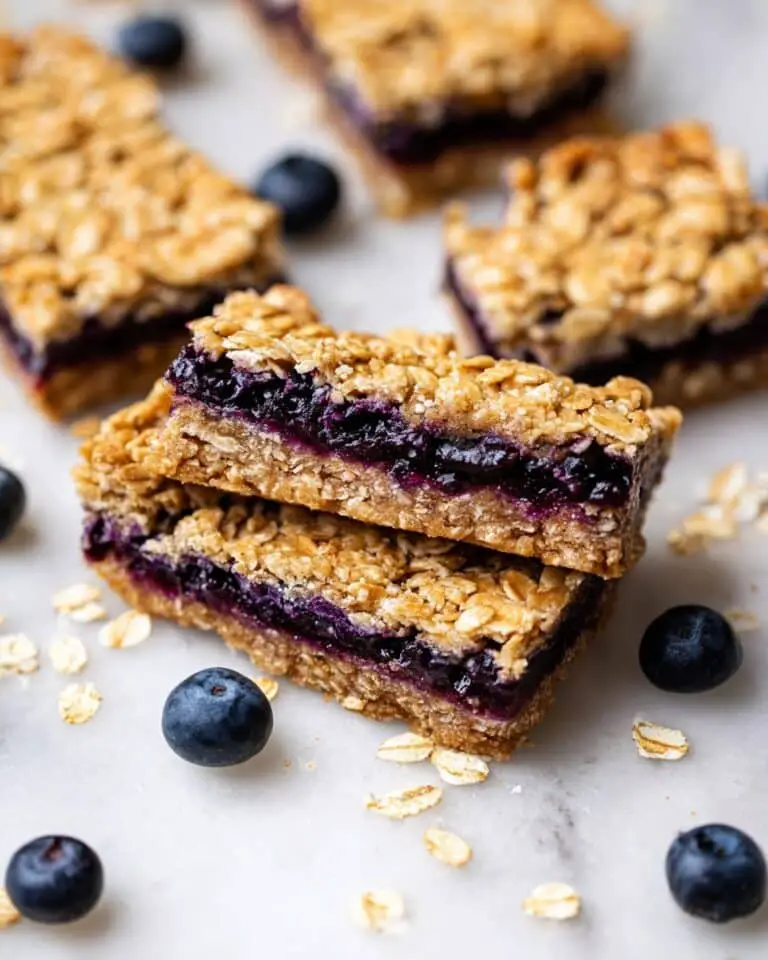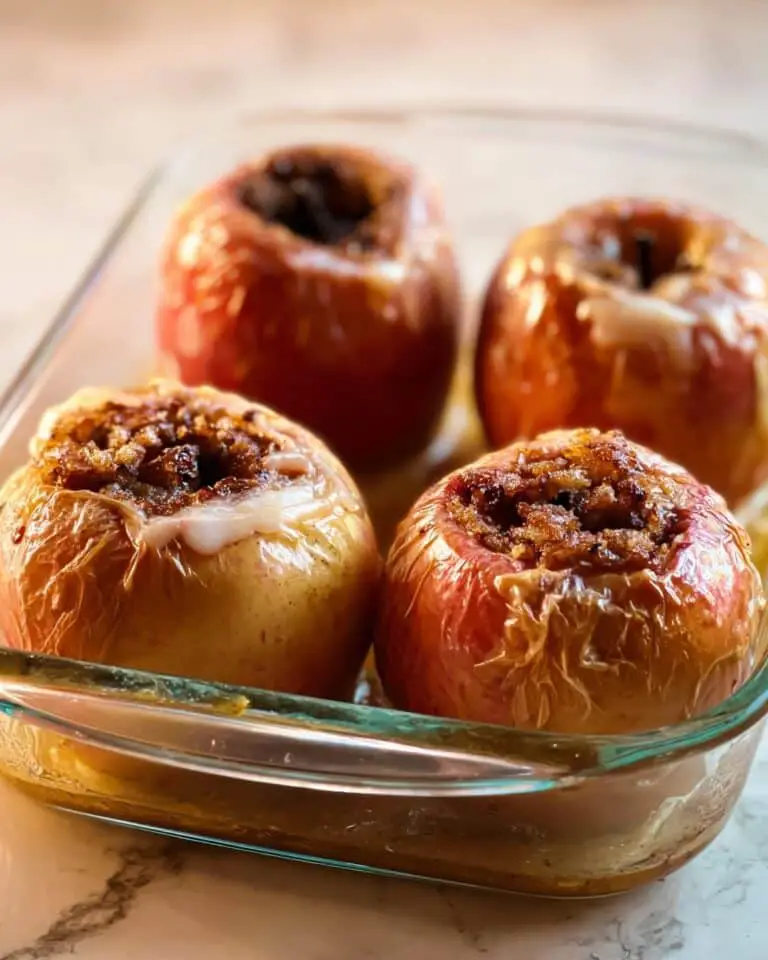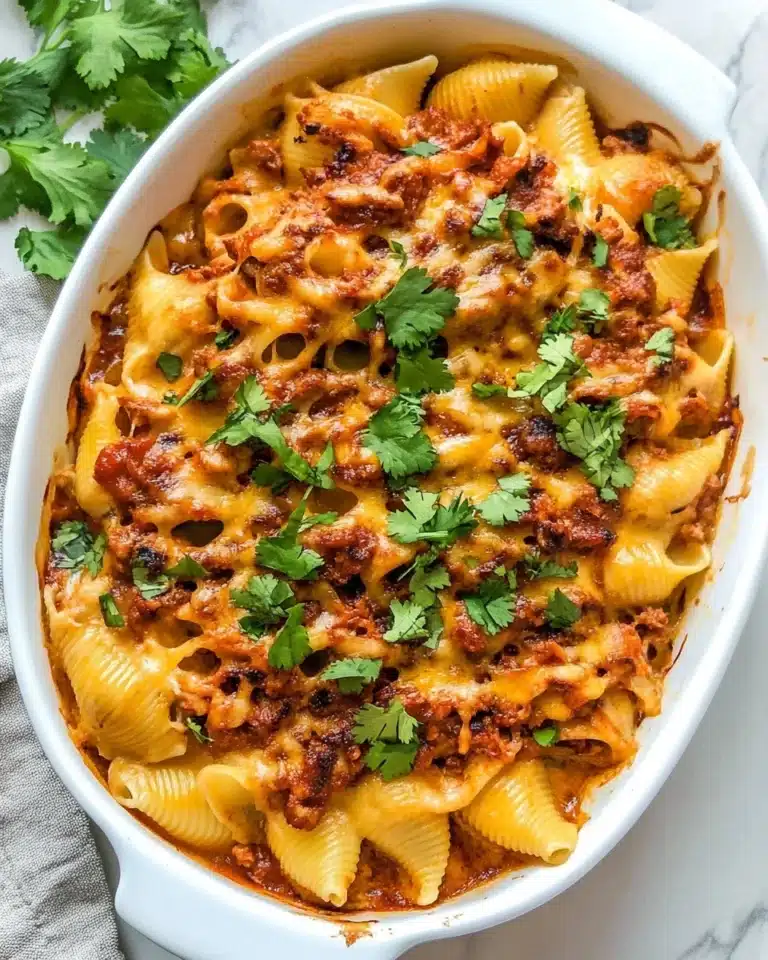If you’re looking for a cozy, comforting meal that’s a little different but still feels like a classic, you’ve got to try this Butternut Squash and Sage Lasagna Recipe. I absolutely love how the sweet, tender butternut squash pairs with aromatic sage and creamy cheeses—it’s like fall wrapped up in every bite. Plus, this recipe is perfect for sharing with friends or family because it’s hearty and elegant all at once.
Why You’ll Love This Recipe
- Unique Flavor Combination: The natural sweetness of butternut squash perfectly balances the earthiness of sage and nutty cheeses.
- Vegetarian-Friendly Comfort Food: This lasagna delivers all the heartiness you crave without relying on meat.
- Simple Prep with Spectacular Results: You’ll be amazed at how easy it is to create something so impressive and cozy.
- Make-Ahead Convenience: Preparing parts of it in advance means less stress on the day you serve it.
Ingredients You’ll Need
Each ingredient in this Butternut Squash and Sage Lasagna Recipe plays a key role—whether it’s adding sweetness, creaminess, or depth. I’ve found that using fresh sage and good quality cheeses really elevates the dish, so it’s worth spending a little extra time sourcing those.
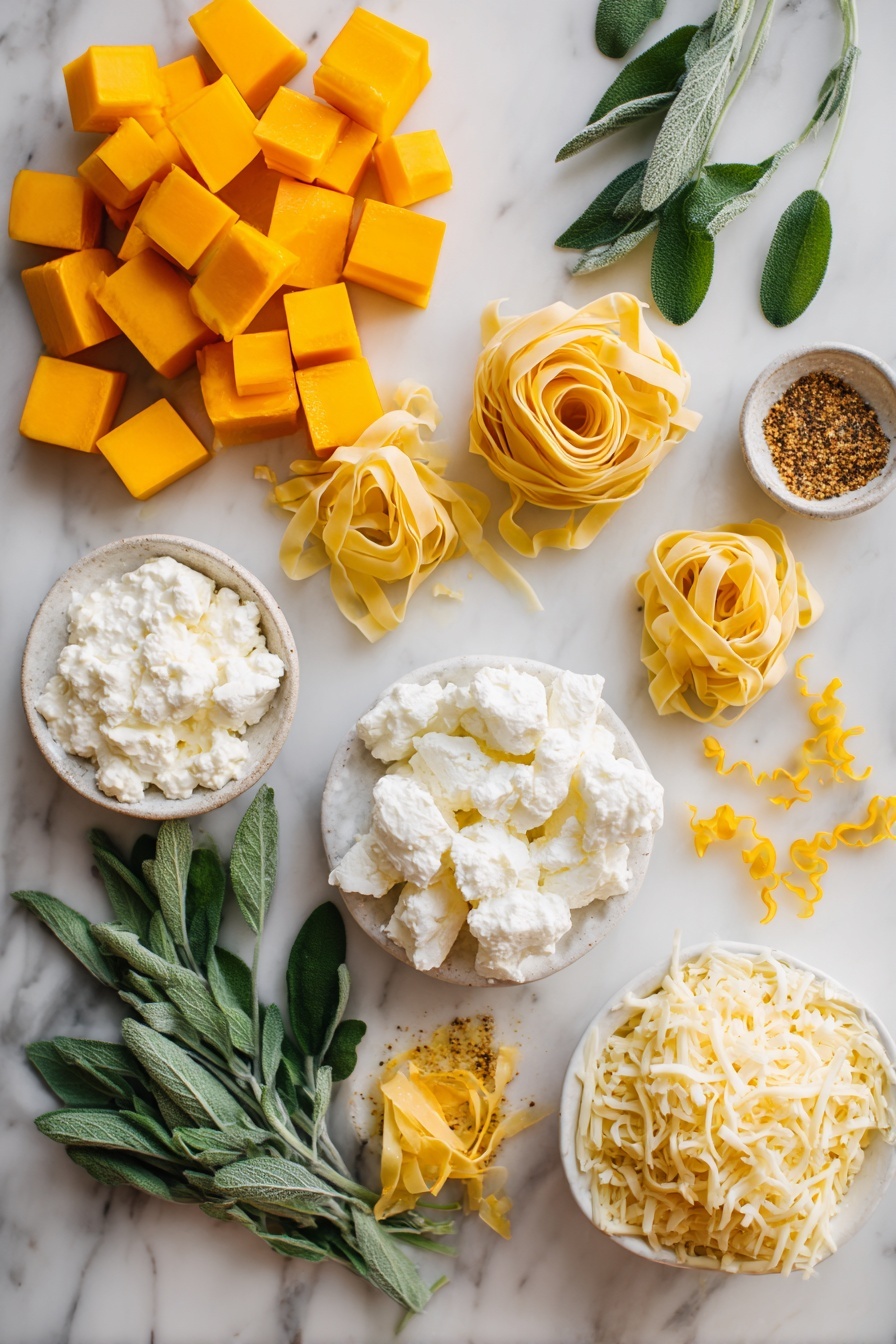
- Butternut Squash: Choose a medium-sized one with firm skin; easier to peel and cube, plus sweeter flavor.
- Olive Oil: Extra virgin olive oil adds richness and helps caramelize the squash beautifully.
- Kosher Salt: Essential for seasoning throughout—brings all flavors to life without overwhelming.
- Garlic Powder: Adds subtle warmth to the butternut squash without the bite of fresh garlic.
- Lasagna Noodles: You can go gluten-free if needed; just remember to boil just until tender but still firm.
- Fresh Sage: The star herb here—its aromatic, slightly peppery notes complement the sweetness brilliantly.
- Lemon Zest: A little zing to brighten the creamy ricotta mixture and keep it from feeling too heavy.
- Ground Nutmeg: Just a pinch adds warm spice that brings a comforting depth to the sauce.
- Milk: Whole milk is best for a luscious ricotta sauce—but you can substitute if needed.
- Ricotta Cheese: Creamy and mild, it’s the base for the luscious cheese sauce layer.
- Pecorino Cheese: Adds a salty, sharp punch that balances the sweetness and creaminess well.
- Mozzarella Cheese: Melts wonderfully and gives that luscious, stringy cheese pull everyone loves.
Variations
One of the reasons I keep coming back to this Butternut Squash and Sage Lasagna Recipe is how easy it is to personalize. Whether you want to switch up the cheese or add a veggie twist, it adapts beautifully so you can make it your own.
- Swap the Cheese: I’ve tried using goat cheese instead of ricotta for a tangier flavor; it’s delicious if you enjoy something a bit more assertive.
- Make it Vegan: Use plant-based ricotta and mozzarella, and swap milk for unsweetened almond or oat milk—you’ll still get that creamy texture.
- Add Greens: My family loves a layer of sautéed spinach or kale added between the noodles for a nutrient boost and beautiful color.
- Herbal Variations: Feel free to mix sage with rosemary or thyme to experiment with flavor profiles that suit your palate.
How to Make Butternut Squash and Sage Lasagna Recipe
Step 1: Prep and Boil the Butternut Squash
Start by peeling and cutting your butternut squash into roughly ½-inch cubes. I discovered that using a serrated vegetable peeler makes the peeling part so much easier. Once cut, bring a medium pot of water to a boil, then add the squash cubes. Boil them for about 5 to 6 minutes until they’re fork tender—this is key, so don’t skip the test piece! When done, drain the squash and toss it in olive oil, kosher salt, and garlic powder while still warm. This simple seasoning step really builds the delicious flavor base for the dish.
Step 2: Boil the Lasagna Noodles
While the squash cooks, bring a large pot of well-salted water to a boil. Add your noodles and cook them until just shy of al dente—about 5 minutes or so. Stir frequently so they don’t stick. Once drained, drizzle a baking sheet with olive oil and lay the noodles flat. Flip them to coat both sides lightly; this tip came from my early attempts when the noodles stuck together and made layering a nightmare. Now, it works like a charm!
Step 3: Make the Ricotta Sage Sauce
In a medium bowl, combine about 1 tablespoon of chopped fresh sage (reserve a bit for the topping), lemon zest, ground nutmeg, ricotta cheese, kosher salt, freshly ground black pepper, and milk. Stir gently until everything is blended into a creamy, aromatic sauce that’s bursting with flavor. My tip is to use fresh lemon zest—it really brightens this sauce beautifully and balances the richness.
Step 4: Layer Your Lasagna
This is where the magic happens. In a 9” x 13” baking dish, start by spreading ½ cup of your ricotta sauce on the bottom—this prevents sticking and builds a flavor foundation. Next, add a layer of noodles, half the cooked squash, scant ⅔ cup of ricotta sauce, 1 cup mozzarella, and ⅓ cup Pecorino cheese. Repeat this layering with the remaining noodles, squash, cheese sauce, and cheeses. Finally, top with another noodle layer, spread remaining ricotta sauce on top, sprinkle the last of mozzarella and Pecorino cheeses, and scatter the reserved sage leaves. If any noodles need trimming to fit your pan, don’t worry—it won’t affect the end taste.
Step 5: Bake Until Golden and Bubbly
Cover your assembled lasagna with foil and bake at 375°F for 40 minutes. Then, carefully remove the foil and bake another 20 minutes until the top is beautifully browned and bubbly. Let it rest for 5 to 10 minutes before cutting in—trust me, this helps the layers set up so you get perfect slices every time. I usually get so tempted to dig in right away, but patience really pays off here!
Pro Tips for Making Butternut Squash and Sage Lasagna Recipe
- Perfect Squash Texture: Don’t overcook the squash; it should be tender but not mushy to hold its shape in layers.
- Noodles That Don’t Stick: Coating noodles with olive oil after boiling makes layering so much easier—you’ll thank me later.
- Fresh Sage Brings Depth: Always use fresh sage if you can—dried just doesn’t give the same aroma or flavor impact.
- Rest Before Slicing: Letting the lasagna sit after baking prevents it from falling apart and helps the flavors meld beautifully.
How to Serve Butternut Squash and Sage Lasagna Recipe
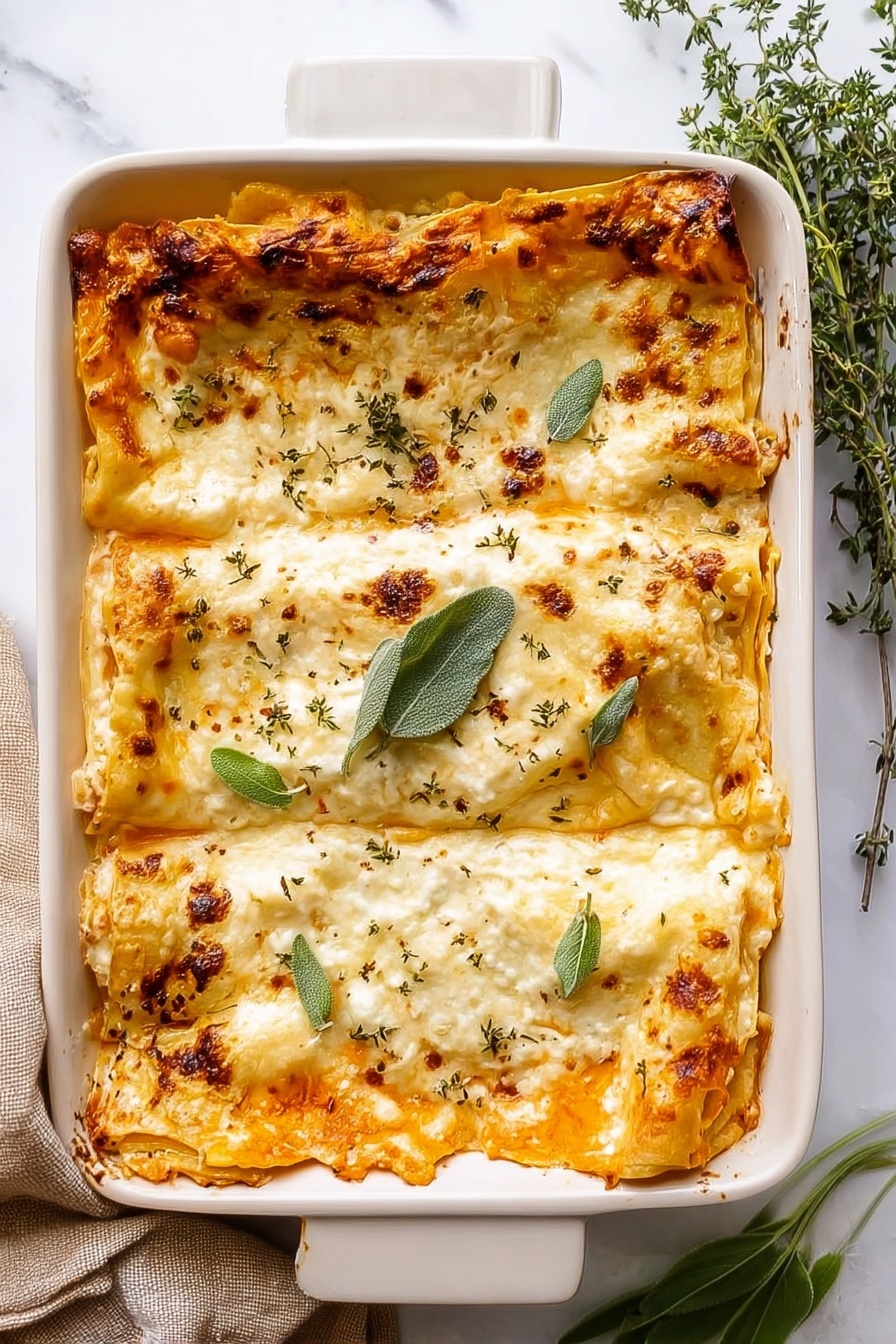
Garnishes
I love to finish this lasagna with a sprinkle of fresh sage leaves and a little extra grated Pecorino cheese right before serving. It adds a pop of color and intensifies that incredible sage flavor. Plus, a light drizzle of good quality olive oil can make it feel just a bit more luxurious.
Side Dishes
My favorite side is a simple green salad with a tangy vinaigrette to cut through the richness—something like arugula with lemon and toasted pine nuts. Roasted Brussels sprouts or garlic sautéed green beans also pair really nicely and round out the meal.
Creative Ways to Present
For special occasions, I’ve layered this lasagna in individual ramekins for a stylish, personalized presentation. You can also serve it with a garnish of edible flowers or microgreens for an elegant touch that’ll have your guests asking for the recipe.
Make Ahead and Storage
Storing Leftovers
I usually cover leftover lasagna tightly in the baking dish with foil and store it in the fridge for 2-3 days. Keeping it sealed helps maintain moisture so the next meal tastes just as good as the fresh-out-of-the-oven version.
Freezing
Freezing works great—just slice the lasagna into individual portions and wrap them tightly in plastic wrap and foil before freezing. This way, you can pull out exactly how much you need without thawing the whole batch. It’s been a lifesaver on busy weeknights!
Reheating
When reheating, I always thaw the lasagna overnight in the fridge, then bake it covered with foil at 400°F for about 15 minutes until warmed through. Removing the foil for the final few minutes helps re-crisp the top just like freshly baked.
FAQs
-
Can I use fresh lasagna noodles for this Butternut Squash and Sage Lasagna Recipe?
Absolutely! Fresh lasagna noodles don’t need boiling, which can save you prep time. Just make sure to coat them with a bit of olive oil to prevent sticking when layering your lasagna.
-
How do I know when the butternut squash is cooked perfectly?
The squash should be fork tender but not falling apart when boiled. After about 5-6 minutes, test a cube by poking it gently with a fork — it should slide through with just a little resistance.
-
Can I prepare this recipe in advance?
Yes! You can boil the squash and noodles ahead of time, or assemble the entire lasagna the day before baking. Just keep it covered and refrigerated, then bake it a little longer when ready to cook to ensure it’s heated through.
-
What cheese can I use if I don’t have Pecorino?
Parmesan cheese is a great substitute for Pecorino. It has a similar salty, nutty flavor that complements the butternut squash and sage beautifully.
Final Thoughts
This Butternut Squash and Sage Lasagna Recipe is truly one of those dishes that feels like a warm hug on a plate. I remember the first time I made it, I was surprised at how effortlessly the flavors came together to make something so memorable. Whether you’re serving it for a cozy family dinner or a seasonal gathering, I think you’ll find it as comforting and impressive as I do. Give it a try—you’ll be so glad you did!
Print
Butternut Squash and Sage Lasagna Recipe
- Prep Time: 30 minutes
- Cook Time: 1 hour
- Total Time: 1 hour 30 minutes
- Yield: 9 servings
- Category: Main Dish
- Method: Baking
- Cuisine: Italian
- Diet: Vegetarian
Description
A comforting and flavorful vegetarian Butternut Squash Lasagna infused with fresh sage and layered with creamy ricotta, mozzarella, and Pecorino cheeses. This dish features tender boiled butternut squash cubes combined with a lemon-zested ricotta sauce, then baked to golden perfection for a wholesome and hearty meal perfect for fall or any time of year.
Ingredients
For the Butternut Squash
- 2-pound butternut squash (medium)
- ½ tablespoon olive oil
- ½ teaspoon kosher salt
- ¼ teaspoon garlic powder
For the Lasagna
- 9 to 12 lasagna noodles (6 to 8 ounces, gluten-free if necessary)
- 1 ½ tablespoons chopped fresh sage, divided, plus additional leaves as desired
- Zest of 1/2 lemon (about 2 teaspoons)
- ⅛ teaspoon ground nutmeg
- ½ cup plus 2 tablespoons milk
- 16 ounces (2 cups) whole milk ricotta cheese
- ¼ teaspoon kosher salt
- Fresh ground black pepper, to taste
- 1 cup shredded Pecorino cheese, divided
- 8 ounces (2 ½ cups) shredded mozzarella cheese, divided
Instructions
- Preheat Oven: Preheat your oven to 375 degrees Fahrenheit to prepare for baking the lasagna.
- Boil the Squash: Peel and cube the butternut squash into ½-inch pieces. Bring a medium pot of water to a boil and cook the squash for 5 to 6 minutes until fork tender. Drain well and transfer to a bowl. Toss with olive oil, kosher salt, and garlic powder for seasoning.
- Cook the Noodles: Meanwhile, bring a large pot of well-salted water to boil. Boil the lasagna noodles for about 5 minutes until just before al dente. Drain and drizzle a baking sheet with olive oil. Lay noodles flat and turn them over so they are coated to prevent sticking.
- Prepare Ricotta Sauce: In a medium bowl, mix 1 tablespoon of chopped fresh sage with lemon zest, nutmeg, ricotta cheese, kosher salt, black pepper, and milk. Stir well to combine into a creamy sauce. Reserve about ½ tablespoon sage for topping.
- Layer the Lasagna: Spread ½ cup of ricotta sauce on the bottom of a 9” x 13” baking dish. Place one layer of noodles, then half of the squash, about ⅔ cup of the ricotta sauce, 1 cup mozzarella, and ⅓ cup Pecorino cheese. Repeat the layering with noodles, remaining squash, ⅔ cup ricotta sauce, 1 cup mozzarella, and ⅓ cup Pecorino. Top with a final layer of noodles, then spread the remaining ricotta sauce over them. Sprinkle the top evenly with the remaining ½ cup mozzarella, ⅓ cup Pecorino, and the reserved ½ tablespoon sage.
- Bake: Cover the dish with aluminum foil and bake for 40 minutes. Remove the foil carefully and bake uncovered for an additional 20 minutes until the top is beautifully browned and bubbly.
- Rest and Serve: Let the lasagna stand for 5 to 10 minutes before serving to allow it to set. This enhances slicing and serving.
- Storage: Refrigerate leftovers for up to 2 to 3 days. To reheat, place in a 400°F oven covered with foil until warmed through. For freezing, cut into portions and freeze individually; thaw in refrigerator before reheating.
Notes
- If using fresh lasagna noodles, there is no need to boil them before assembling.
- Make ahead ideas include boiling the butternut squash and noodles in advance and refrigerating separately coated with olive oil to prevent sticking.
- You can assemble the entire lasagna the day before baking and refrigerate overnight. Bake longer if needed so it is warmed through and cheese is browned.
- For freezing, portion the lasagna before freezing to make reheating easier and convenient.
- Use gluten-free noodles if necessary to accommodate dietary restrictions.
Nutrition
- Serving Size: 1 slice (1/9 of recipe)
- Calories: 350
- Sugar: 4g
- Sodium: 420mg
- Fat: 18g
- Saturated Fat: 10g
- Unsaturated Fat: 7g
- Trans Fat: 0g
- Carbohydrates: 30g
- Fiber: 4g
- Protein: 15g
- Cholesterol: 55mg

